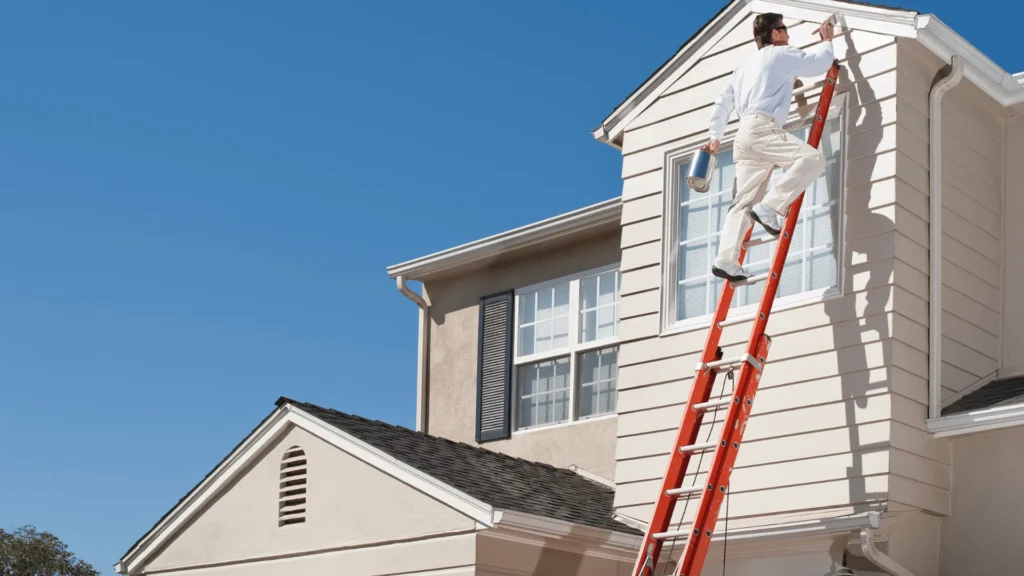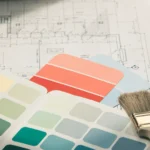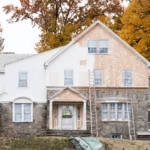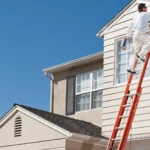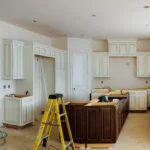Why Exterior Painting Matters More Than You Think
Painting the outside of your home does more than keep the HOA happy. It acts as a protective layer against the elements, shields your siding from moisture damage, and keeps the entire property looking fresh. A well-painted exterior boosts curb appeal, improves resale value, and prevents costly repairs down the line.
But how much should you expect to spend? The truth is, the cost to paint exterior of house surfaces varies widely based on size, condition, materials, and even the time of year. Let’s break down what goes into pricing an exterior painting project so you can plan smart and avoid surprises.
Average Cost of Exterior Painting Projects
The cost to paint the exterior of a house can swing quite a bit depending on what your home needs. Size plays a role, of course, because more square footage means more paint, more time, and more hands on deck. But just as important are the details most homeowners don’t think about until they’re already in it: the shape and condition of the siding, the type of materials, the trim work, and how accessible everything is.
That’s why at Musselman Painting, we don’t believe in cookie-cutter pricing. A personalized quote gives you a full picture of what’s involved, no vague ballparks, and no surprise add-ons halfway through. While some painters throw out a fixed number, we’d rather walk the property with you, see what really needs attention, and give you a plan that’s built for your home, not someone else’s.
Key Factors That Affect Exterior Painting Costs
Before you land on a number, it helps to peel back the layers of what actually drives the cost of exterior painting. It’s rarely just about square footage. There’s a long list of factors, some obvious, others not, that shape the final quote and determine what kind of result you get for your investment.
Size and Square Footage of the Home
More siding means more everything: paint, prep time, and hands on the job. But it’s not just about surface area. Larger homes often include extra architectural elements like dormers, trim variations, or extended rooflines. A compact single-story and a sprawling multi-level home might both need painting, but the approach, effort, and access needed are rarely the same.
Condition of the Exterior
We don’t show up, crack open a paint can, and get to work. If your siding is peeling, chalky, or cracked, it needs attention before a single coat goes on. Sanding, scraping, patching, caulking, this prep work can take hours or even days, depending on how weathered the exterior is. The more wear and tear, the more labor-intensive the job becomes, and that shows up in the final cost.
Type of Siding or Material
Your home’s exterior isn’t just a blank canvas, it’s a surface with personality. Wood, for example, absorbs paint and may require extra coats to look its best. Stucco can’t just be rolled over; it often needs patching and a specialty primer. Brick needs breathable coatings that won’t trap moisture. Vinyl is more forgiving, but has color limitations due to heat absorption. Every material demands a different playbook, and that influences both material choices and prep strategy.
Quality of Paint and Materials Used
There’s a big difference between paint that lasts five years and paint that holds strong for a decade. Premium paints resist fading, peeling, and mildew better, especially in areas with harsh sunlight, humidity, or rain. While entry-level products might save money upfront, they often need more frequent reapplication. At Musselman Painting, we always walk our clients through these trade-offs so you’re not just picking a color, but making a choice about longevity and value.
Labor and Prep Work
Great prep is invisible when the job is done, but it’s what makes the finish last. Masking windows, taping off edges, replacing damaged caulk, and making sure every surface is clean and primed, all of that adds time and precision to the project. Skilled labor is a major part of the price, and rightly so. Our team at Musselman Painting doesn’t cut corners on prep because even the best paint can’t compensate for a poor foundation.
Regional Pricing Differences
Where you live plays into your painting quote more than most people realize. Local labor rates, material costs, and even climate trends shape how a job is priced. In coastal areas, paints need to withstand salt and humidity. In dry zones, sun exposure can be brutal on pigment. That’s why pricing in one state may not reflect what’s typical in another, even for similar-sized homes. We take all of that into account when building your quote, so there are no assumptions, only answers that fit your location and your needs.
Additional Expenses to Consider
The base square footage price is only part of the story. Certain features or conditions can increase your final bill.
Trim, Doors, and Windows
Painting trim, doors, shutters, and window frames adds time and complexity. These areas often require finer brushwork, extra coats, or specialty paints. It’s worth it for a clean finish, but it does increase the scope.
Multi-Story Homes and Accessibility
If your home has tall peaks or difficult access points, we may need ladders, scaffolding, or even lifts. These aren’t just safety tools, they’re also logistics that add time and cost.
Time of Year and Scheduling
Painting season peaks in spring and fall when weather conditions are ideal. During high-demand months, pricing may be higher due to tight scheduling. Booking in shoulder seasons or planning ahead can help you lock in more favorable rates.
Cost-Saving Tips for Homeowners
Stretching your exterior painting budget isn’t just about hunting for the lowest quote. It comes down to making smart decisions that balance timing, upkeep, and long-term value. Scheduling your project earlier in the season can help avoid peak pricing periods when crews are stretched thin and demand is high. Taking care of your siding between paint jobs, by keeping it clean, clearing debris, and addressing minor wear, can also extend the lifespan of your current finish. And while getting multiple quotes is always a good idea, the cheapest number doesn’t always reflect the best value. Pay attention to what’s actually included, from surface prep to paint quality to cleanup. At Musselman Painting, we provide detailed, transparent estimates so you can move forward with confidence and avoid the surprises that often come with cut-rate bids.
Why Professional Painting Is Worth the Investment
Cutting costs on a DIY job or bargain-rate contractor might save you up front, but it often leads to earlier repaints, uneven finishes, or missed repairs. Professional painting adds long-term value by extending the life of your siding, protecting your home from damage, and keeping it looking intentional for years.
We stand behind our work and offer warranty options to give you peace of mind. At Musselman Painting, we believe the results should speak for themselves, and last.
Choosing the Right Path for Your Project
The cost to paint the exterior of house surfaces isn’t one-size-fits-all. Your home’s square footage, current condition, siding type, and even the season you schedule all play a role in shaping the final price, and the results.
At Musselman Painting, we don’t believe in quoting a number without context. We take time to walk you through what your specific project requires, why certain steps matter, and how to make the most of your investment.
If you’re thinking about an exterior refresh, don’t just shop by price tag. Ask questions, compare scope, and work with a team that treats prep work like it matters, because it does. Reach out to us for a custom estimate, and let’s talk about giving your home a finish that stands up to time, weather, and whatever else comes its way.


